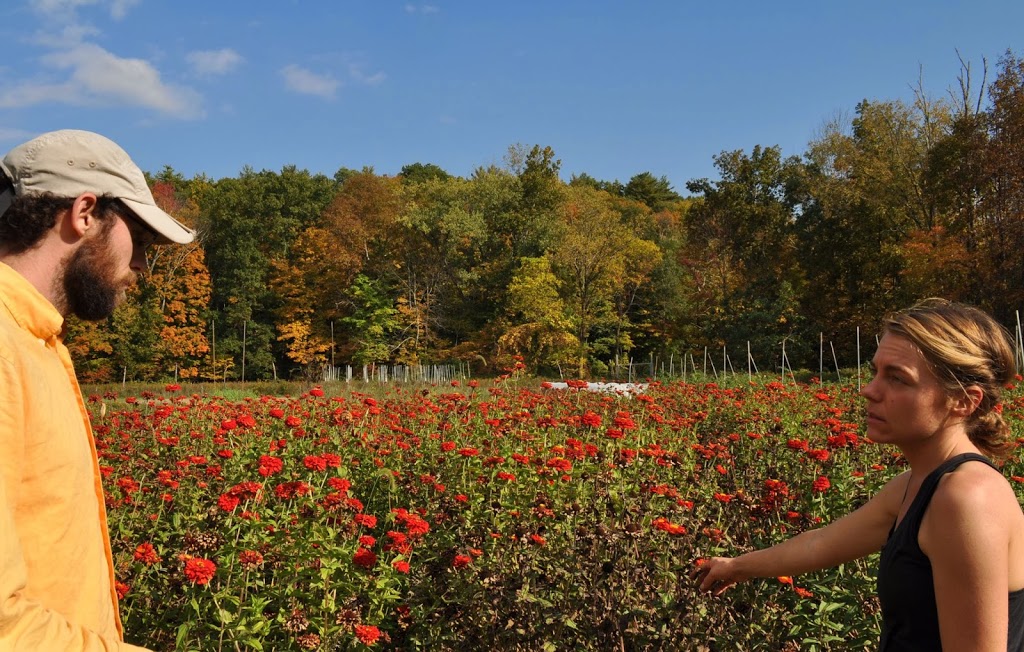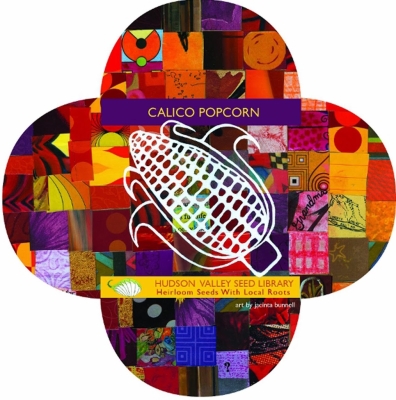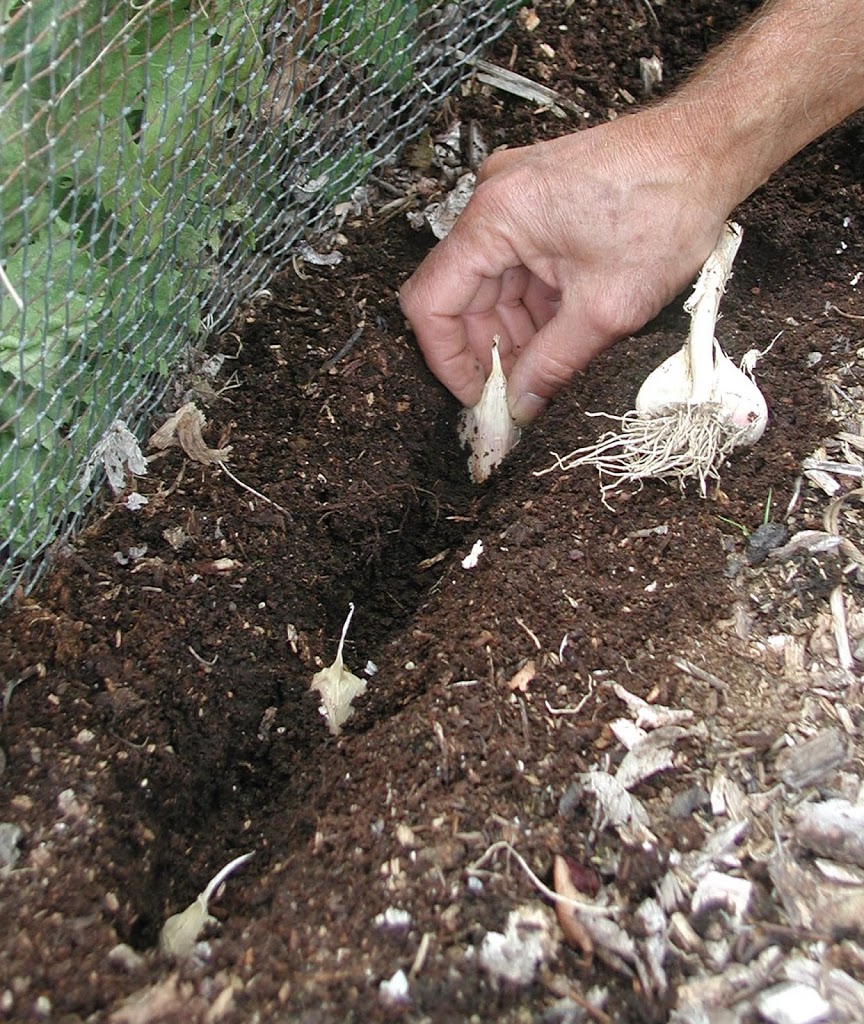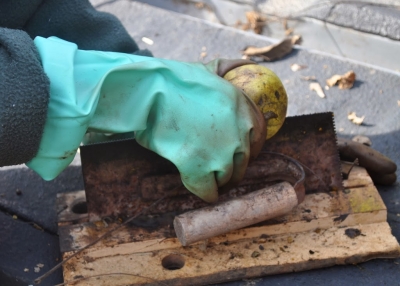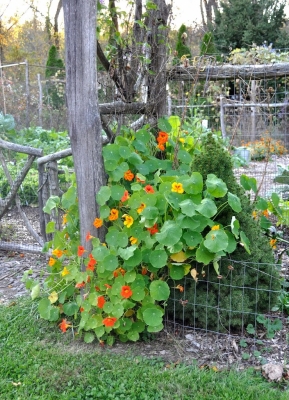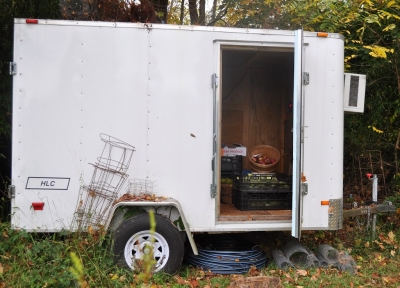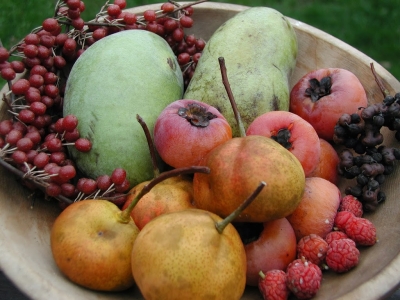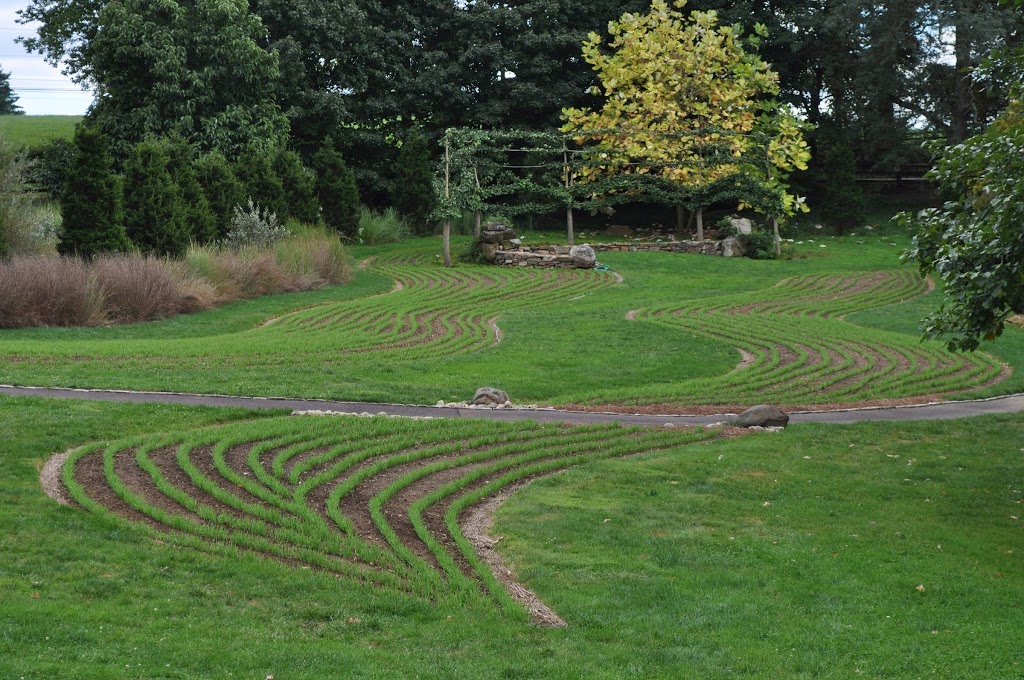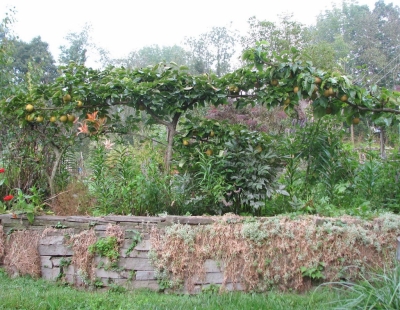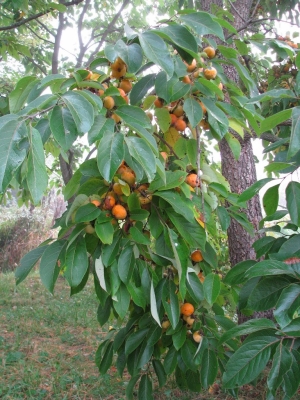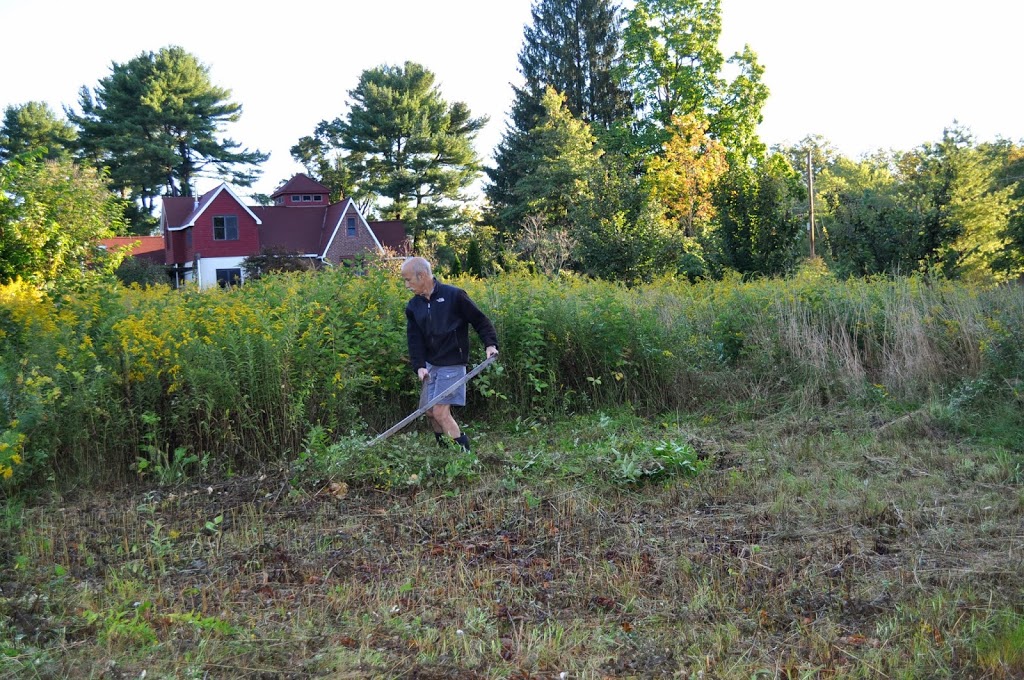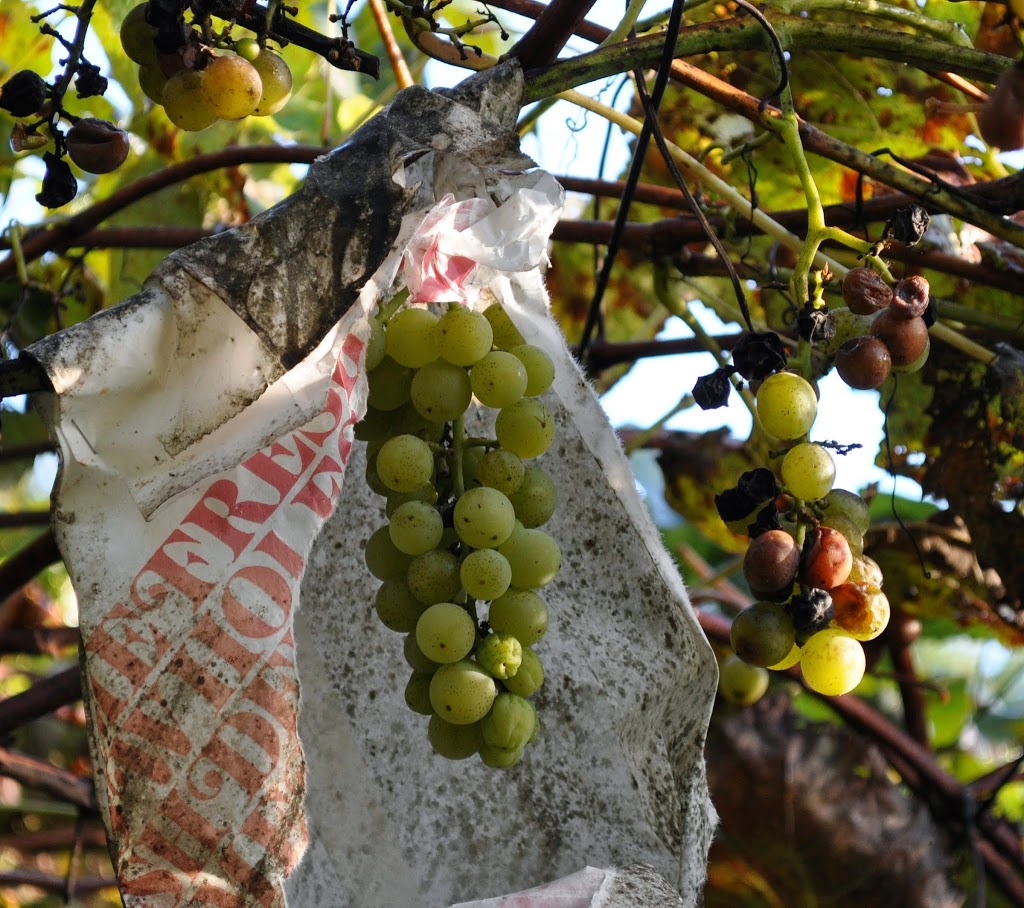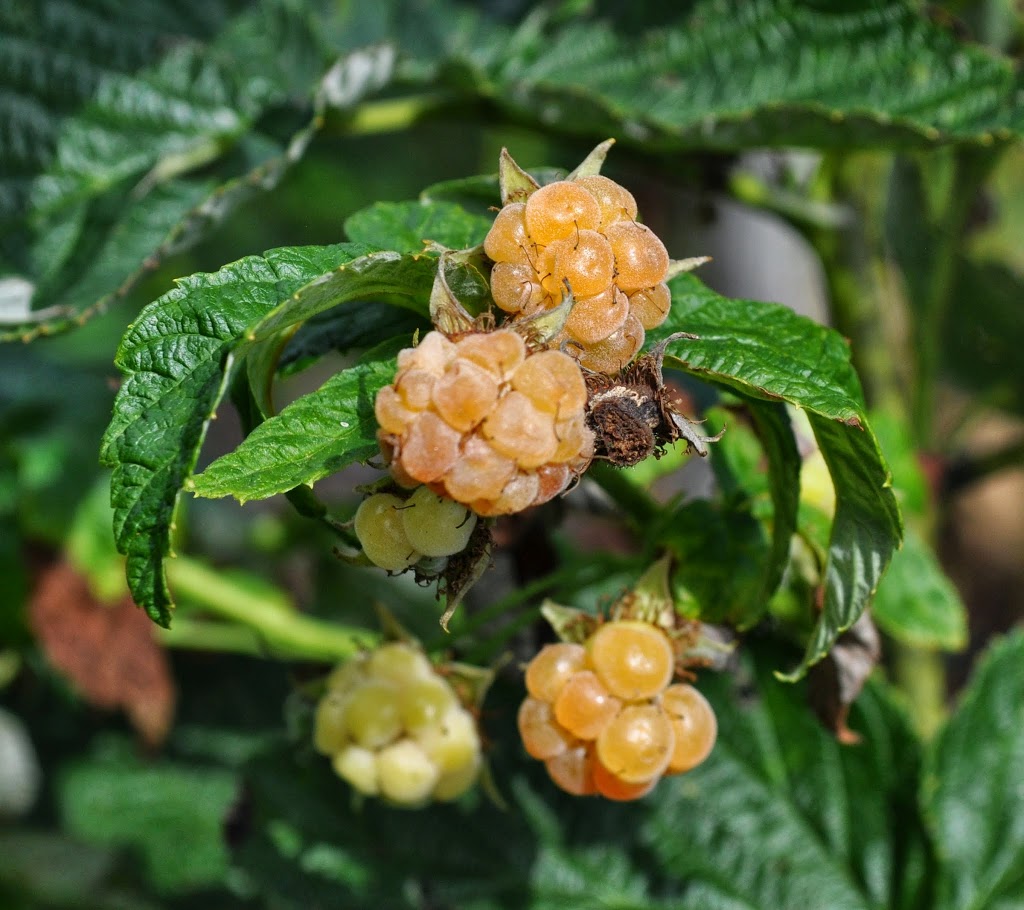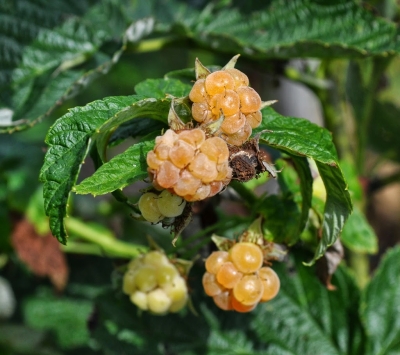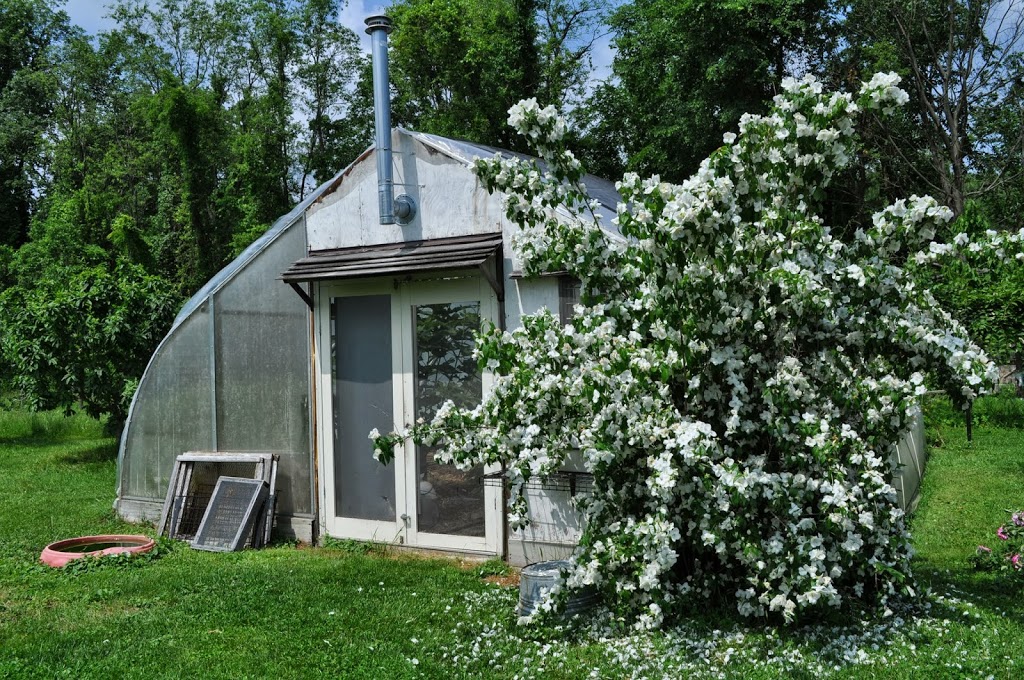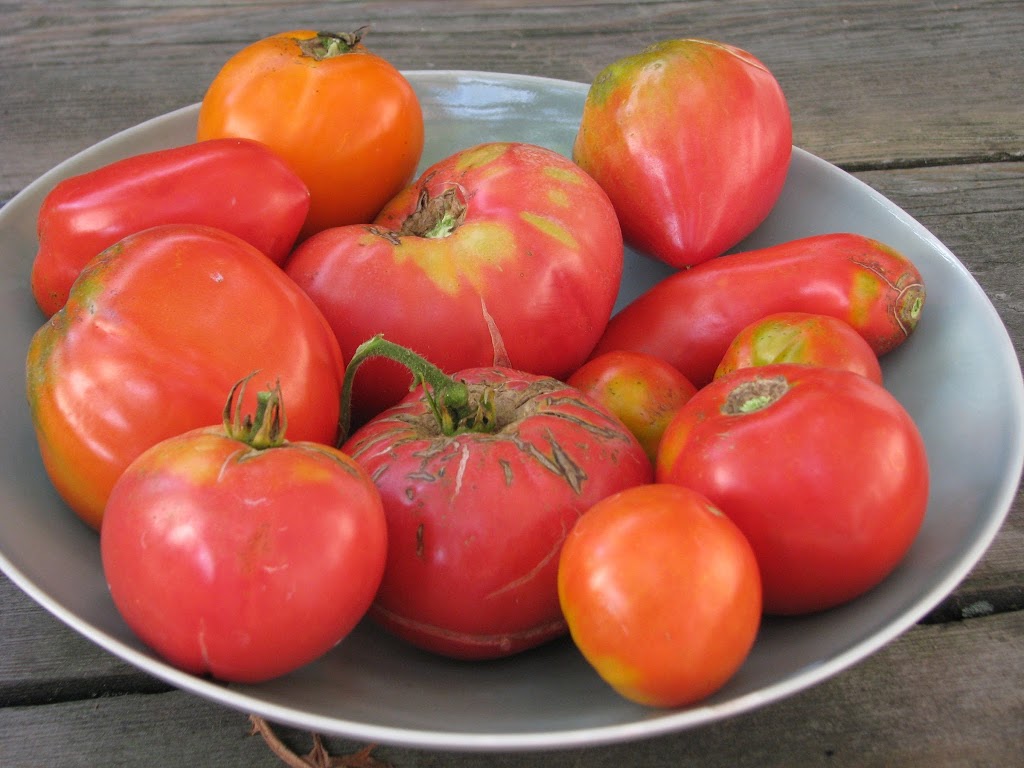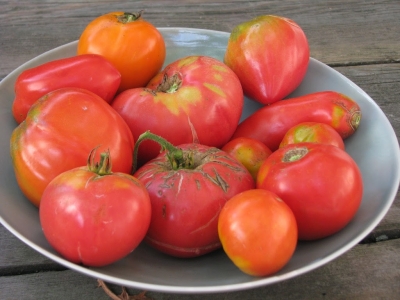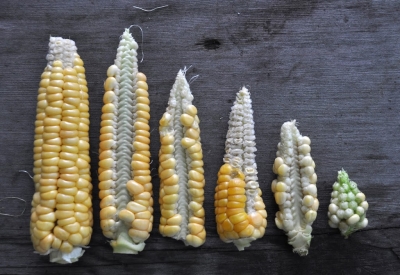SEEDS OF ALL STRIPES
/0 Comments/in /by Lee A. Reichimportantly — they get an education on how to best grow the plants, maintain trueness, and collect the seeds for the year’s variety. So a promiscuous vegetable, such as cucumber, whose female flowers mate easily and readily with any cucumber pollen, needs different treatment than, say, a tomato, whose flowers maintain greater fidelity because each one has both male and female parts, and just a little vibration — a breeze, perhaps — unites male with female parts. This year, community growers harvested Blue Pod Capucijners Soup Pea seeds. Dwarf Sunflowers are on the docket for next year.
vegetables or flowers, but of an artist’s representation of the particular variety. So Calico Popcorn’s packet, illustrated by Jacinta Bunnell, sports a line drawing of an ear of popcorn against a colorful calico backdrop. A German Shepherd — Ken’s old dog, Kale — with a mouthful of kale decorates the packet of Dino kale illustrated by Michael Truckpile.
 The originals of each year’s new artpacks (not every variety gets an illustrated packet) are featured in an art show that begins locally and then travels around the country. To see the schedule, go to http://www.seedlibrary.org/events/.
The originals of each year’s new artpacks (not every variety gets an illustrated packet) are featured in an art show that begins locally and then travels around the country. To see the schedule, go to http://www.seedlibrary.org/events/.Too Much Respect, Walnut Tech, and Nasturtium Homage
/6 Comments/in /by Lee A. ReichFirst, it was a little late for planting. Garlic likes to be settled into the ground in early fall, even as early as late summer. Roots grow as long as the ground temperatures remain above 40°F.. Planted early, then, roots can begin foraging for nutrients and anchoring the cloves against being heaved up and out of the ground as the soil freezes and thaws.
glob of greenery and flowers — perfect for, softening the stark contrast between a vertical post and flat ground or the sharp-looking edge of a wall.
Fruits Galore, But Not Apples
/24 Comments/in /by Lee A. Reichdesired variety onto special dwarfing rootstocks. Mine are M.27, M.9, and Bud.9. But dwarfing rootstocks have weak root systems that barely support the trees and cannot forage far for nutrients and water. So the trees need staking and the best of soil conditions.
 |
| My Hudson’s Golden Gem this year |
thought to have been a promising tree to quickly create a tree of a new variety. Buying apples limits you to the dozen or so varieties selected, in large part, for good shipping, good looks, and other commercial qualities.
overflowing with the likes of American persimmons, pawpaws, and kiwiberries, and there are plenty of grape bunches and figs to be plucked and pears waiting to be ripened and eaten.
This electronic device, when paired to an air conditioner, “fools” the air conditioner into thinking that it has not yet reached 60°, which is the
lowest temperature those units normally wants to go. All you do is set the CoolBot for the temperature to which you want the room to cool. CoolBot also uses less energy than a standard, walk-in, cooler compressor.
Who’s Got a Pretty Garden?
/0 Comments/in /by Lee A. Reichof grasses. Lawn sculpture, of lawn. So there is mown lawn within which are splayed large sections of tufted, tawny, clumping grasses (fescues, I believe). Cover crops, which are used on farms for soil improvement, are used decoratively at Chanticleer, perhaps also for soil improvement. One 70-foot-long by 15-foot-wide, leaf-shaped bed had been tilled and was sprouting “veins” of rye(?) plants along its length.
leaves. Some grow in pots, attractive and distinctive in their own right. In response to my query about how they store all those tender plants in winter, I was told that most were discarded. Chanticleer closes for the season November 3rd.
and Seuri-Li Asian pears hang from the branches of espaliered trees sitting atop a stone retaining wall. Atop another retaining wall along the east and north side of the house is a lush, green groundcover of lowbush blueberries, soon to turn a fiery crimson color. Mingling with those blueberries are low-growing lingonberries, whose red fruits are highlighted by the backdrop of the plants’ glossy, evergreen leaves.
remain edible even after the leaves drop. The fruits, the varieties Mohler, Dooley, and Yates, are delicious, akin to dried apricots that have been plumped up with water, dipped in honey, then given a dash of spice.
A Scything I Do Go . . .
/4 Comments/in /by Lee A. Reichbrush hog attachment, which is, in essence, a giant rotary motor. But I mow the edges and a significant portion of the field by hand, with a scythe.
(Stay tuned for a scything video posted on my “Life on the Farmden” video series; link to the series above, to the right.)
areas dense with blackberry canes or sumac shoots. Exposed to light, the near-naked ground should soon be dense with sprouting grasses. By selectively scything those cleared areas repeatedly next spring, grasses can regain a toehold. Grasses are the only plants that tolerate frequent mowing.
native minerals are unlocked over time as those minerals are solubilized by microbes and root exudates.
Flowers and Grapes
/6 Comments/in /by Lee A. Reichask. The bags enclose bunches of grapes hanging from the vines, and their purpose is to fend off birds, bees and other insects, and disease.
 |
| Supertunias |
number of pastel colors, just like traditional petunias. They part ways with traditional petunias in their profusion of nonstop blossom. The blossoms always have an attractive backdrop because they are self cleaning — spent blossoms disappear into nothingness.
 |
| Bracteantha |
offered some protection to my grape bunches that were not bagged.
 |
| Begonias |
The begonias are tender perennials, so could be carried through the winter indoors if I dug up the plants and potted them up, or rooted cuttings. Easiest to preserve, literally, would be the bracteantha; like strawflowers, bracteantha dries well. I’ll give it a try.
Viruses Are Good . . . Sometimes
/1 Comment/in /by Lee A. Reichessential micronutrient, the deficiency of which also results in low yield and crumbly fruits. But . . . tarnished plant bugs were not particularly prevalent this year and sandy soils low in humus are where boron is usually lacking. Soil here on the farmden is not sandy and years and years of mulching have maintained very high levels of humus.
 Tomato ringspot virus is spread by dagger nematodes, and some evidence exists that thorough tillage causes dramatic drops in their numbers. Generally, I rail against tillage for a number of reasons but, hey, gardening and life are about achieving a balance. For my new raspberries, the benefits of tillage might outweigh the negatives.
Tomato ringspot virus is spread by dagger nematodes, and some evidence exists that thorough tillage causes dramatic drops in their numbers. Generally, I rail against tillage for a number of reasons but, hey, gardening and life are about achieving a balance. For my new raspberries, the benefits of tillage might outweigh the negatives.contorting in fanciful directions — more pretty than painful. Such fusion is called fasciation, the result, sometimes, of virus infection.
Better than a Boxer and Goodbye to Mac
/4 Comments/in /by Lee A. Reichand after the sprouts grew for a week or two I delicately lifted individual seedlings out of the flat by their tiny leaves. Each sprout went into a waiting hole dibbled into a larger flat filled with potting soil, this time a flat where each sprout got its own cell.
settled in the north, in a small house that practically butted right up against my garage.
After he moved to an apartment, he started washing them here to bring home. As he aged, I started washing them while he watched. And finally, I started bringing him bags of washed, boiled, frozen turnip greens.
Tomatoes and Corn, mmmm
/0 Comments/in /by Lee A. Reichmost pollen is shed in the morning before temperatures get that hot. Again, though, nights that are too warm can interfere with corn pollination. Some insect eating the silk at critical stage could also result in incomplete pollination.


